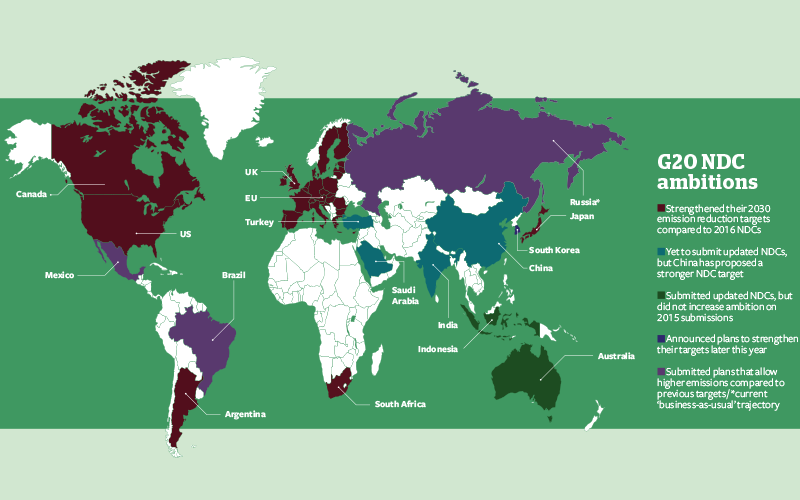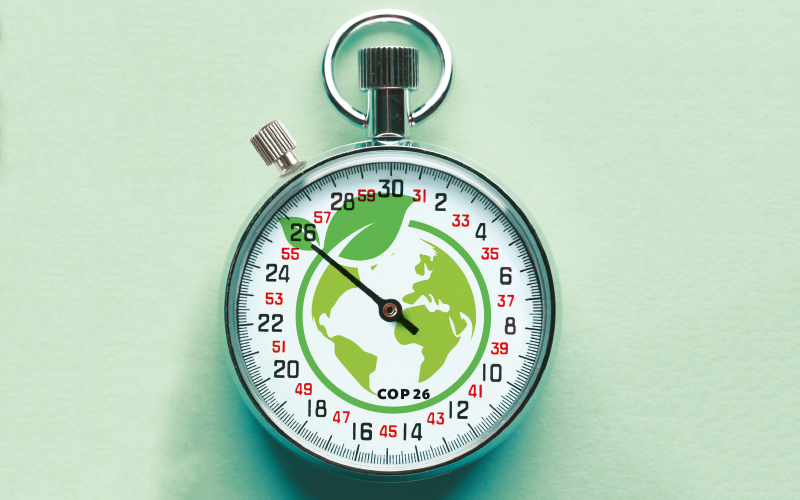Keeping 1.5˚C alive
By Bill Hare, CEO of Climate Analytics

We know from the Intergovernmental Panel on Climate Change’s special report on 1.5°C that to stay safely within a 1.5°C pathway, global emissions must be reduced by 45% from 2010 levels by 2030. However, the collective commitments put forward by countries are a long way from this.
In this context, the G20 group of nations is critical, accounting for around 75% of global emissions, 80% of economic activity, and 60% of the worldwide population.
Can the G20 close the 2030 emissions gap?
We recently conducted a study with our colleagues at the World Resources Institute on how the G20 could take the world closer to achieving the required 2030 emission reductions: in other words, how much can it close the 2030 ‘emissions gap’?
The answer is sobering. The commitments put forward so far would narrow the gap of 29 gigatonnes of CO2 equivalent (GtCO2e) in the reference scenario (estimated in December 2019) by about 6 GtCO2e. That leaves 23 GtCO2e to be reduced by 2030 for a Paris Agreement-compatible pathway.
What could be done?
The report shows that if the G20 countries with net-zero targets bring their 2030 goals into line with those targets, the gap will close by around 9 GtCO2e. If the G20 governments without net-zero goals increase their 2030 goals in line with the Paris Agreement, the gap will be reduced by a further 6 GtCO2e.
The G20 cannot do it alone: all countries must step up to close the significant remaining gap (8 GtCO2e) in this decade.
But if the world’s leading economies aligned their targets with what science says is needed to avert the worst impacts of climate change, it would be a massive act of leadership.
Can this be done, and how?
Fortunately, the International Energy Agency (IEA) has provided an invaluable perspective on this with its recent publications World Energy Outlook 2021 and Net Zero by 2050: a Roadmap for the Global Energy Sector, published in May. Targeting COP26, these reports focus on the main challenge: the transformation of the energy system towards a clean net-zero system by mid-century.
What does the IEA net-zero roadmap tell us about the energy transformation ahead? Under current policies, the IEA indicates that renewables will need to ramp up by a further 50% by 2030 – about 160% above 2020 levels. Oil and gas use would need to be 30% down compared to where they are otherwise headed under current policies by 2030. Coal use will need to be well under half of the present levels.

On the economics, the IEA indicates this transformation will bring significant economic benefits to nearly all countries, such as reduced energy costs and lower levels of air pollution.
Decarbonising the energy economy is a major transformation, but will bring massive opportunities. The benefits are likely to accrue more to those that lead than those that lag.
That is the main political challenge ahead at Glasgow. We must seize these opportunities and set the world on a path towards net zero by 2050, with the biggest transformation in the energy system since the Industrial Revolution.
G20 NDC ambitions
- Strengthened their 2030 emission reduction targets compared to 2016 NDCs
- Yet to submit updated NDCs, but China has proposed a stronger NDC target Submitted updated NDCs, but did not increase ambition on 2015 submissions
- Announced plans to strengthen their targets later this year
- Submitted plans that allow higher emissions compared to previous targets / *current ‘business-as-usual’ trajectory






Follow us
Advertise
Free e-Newsletter